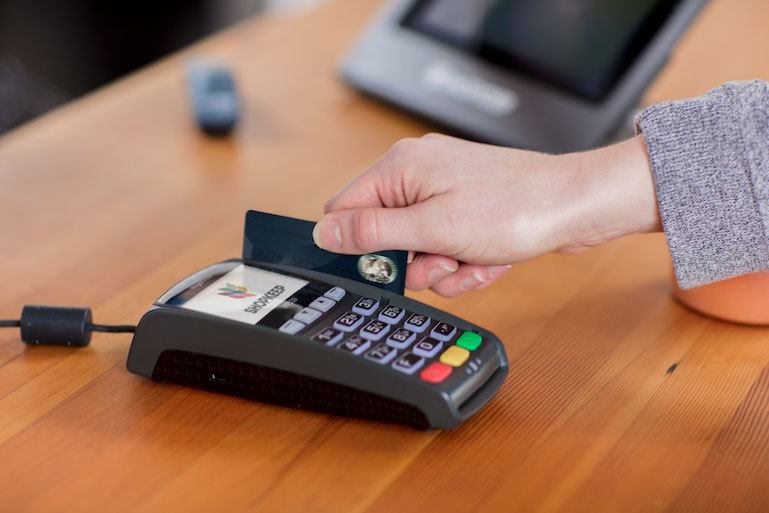
How To Save On Credit Card Processing Fees
As a modern retail business or restauranteur, it’s highly likely that you accept credit cards. It’s one of, if not the most, popular payment methods after all.
As a result, you might be looking for a break from your credit card processing fees. They can definitely add up, especially if you’re processing a significant number of transactions. If this sounds like you, then you’ll want to pay attention to this post.
We’re going to share some of our favorite tips and tricks for saving on your credit card processing fees. Let’s get started.
Find a New Processor
The quickest and perhaps the bluntest way to save money on credit card processing fees is to look around for a new processor. One of the main ways that processors compete with one another is through processing rates. Another area of competition is through the additional services that these Merchant Service Providers (MSP) sometimes offer.
However, your primary objective when shopping around for a new processor will be to locate a lower processing rate. However, it might make sense to look one layer deeper if you’re interested in additional services.
A great example of this is if you think you’ll want funding for your business in the future. In this case, you might find yourself in a situation where an MSP will offer a higher processing fee but offer a Merchant Cash Advance (MCA) service. In this case, it might be worth it to you to pay a slightly higher processing rate, but know that you’ll also be able to secure funding when you need it in the future.
SEE ALSO: How to Accept Credit Card Payments
Negotiate With Your Processor
If moving to a new processor is out of the question, negotiating with your current processor is also an option for reducing the money you spend on processing costs. The best way to do this is to rely on your transaction volume. If you’re running enough transactions, you can often speak with your processor and get them to lower your per transaction rate, up to a point.
All processors have a base rate (called the interchange rate) that is set by the credit card companies (Visa, Mastercard, Discover, etc.) that they need to cover. You won’t be able to get below that, but there’s still room for savings.
Another way to approach negotiation with your processor is to look beyond your processing rate to the other fees you might be paying. For example, it’s not uncommon for a processor to charge fees for:
- Account maintenance fee – This is a recurring fee for keeping your account open. It’s often billed as a monthly fee or annual fee.
Minimum processing volume fee – Some processors require you to meet a specific transaction volume each month. If you don’t hit that minimum, they’ll charge you a fee. - Terminal rental fee – This is a fee for renting your credit card terminal from the processor. You might be paying this fee if your processor required you to use a terminal they provided.
- Dispute fees – You might be charged a fee for instances where your processor needs to investigate a transaction because a customer has filed a dispute.
- Chargeback fees – If charges that are disputed by your customers result in a refund (chargeback), you may be required to pay a fee.
- Batch payment processing fees – Typically credit purchases are submitted for processing in groups several times a day. Your processor may charge you a small fee for this.
Due to the complexity and multiple parties involved in credit card processing, not all of these fees are within the power of your processor to control. However, there’s likely some wiggle room for fees like the minimum processing volume fee and the account maintenance fee. If you can’t make progress on your processing rate, try to negotiate these fees down or get them eliminated altogether. Lastly, going back to our first point, if you’re going to look for a new processor, endeavor to find one that charges as few fees as possible.
Change Your Account Type
When you set up an account with a processor, there are typically a variety of different account types that you can choose from. Each has a different cost to your business. However, not all processors offer every account type. So, if after reading this section you want to switch to an account type that your current service provider doesn’t offer, you’ll need to find a new one.
Tiered Pricing
This type of account takes interchange rates for different cards and transaction types and buckets them into various tiers. Each tier is basically a different percentage that you’ll pay for each card or transaction type. For merchants, this can simplify mean understanding how much money they’re paying for processing each month. However, there isn’t much, if any, transparency as to how these tiers are created and each processor does it a little differently.
Additionally, these tiers are created by the processor with no oversight by a third-party organization or legal body. This can lead to situations where the processor unfairly manipulates categories to generate more revenue from their merchants. Because of this, merchants on a tiered pricing account often face a higher cost for processing than merchants on other account types.
Interchange-Plus
This type of account is a newer addition to the payments industry, but it’s quickly proving itself as one of the best choices for most merchants. With this account type, the merchant sees the interchange rate they’re paying for each transaction, clearly, as well as the additional fees layered on top of that interchange rate. This can make a monthly statement look a little busy or complicated, but it also shows merchants precisely what they’re paying. Despite the complexity, this amount of transparency is typically welcomed by merchants, and is, frankly, a breath of fresh air in an industry that has a reputation for lacking transparency.
Flat Rate
This type of account offers precisely what it sounds like: a flat rate for all transactions. However, there may be some nuance here as you could have a few different flat rates for your account like:
- A swiped or EMV debit rate
- A swiped or EMV credit rate
- A keyed-in rate
These rates are typically the interchange rate, with an additional percentage fee layered on top of it. The difference between a flat rate account and a tiered account is that a flat rate account has far fewer tiers. The main benefit of flat rate accounts is that they’re very simple for merchants to understand. The negative is that depending on your average transaction size, particularly for businesses with a larger average transaction size, you can often get a lower rate from an interchange-plus plan. However, if you’re running a business with a low transaction volume and a low transaction size, this type of plan may appeal to your need for simplicity and low maintenance. Confused? This credit card processing guide from CardFellow provides a detailed breakdown of why and how interchange-plus can save your business money on credit card processing.
An interchange-plus plan is recommended for most merchants. The transparency and usually, lower cost, is worth any additional complexity. However, you’ll need to run the numbers for your own business to find the account type that will offer you the rate that you want.
SEE ALSO: How is ShopKeep Different from Square?
Mitigate Fraud As Much As Possible
Unfortunately, issues like fraud, disputes, and chargebacks are an almost unavoidable aspect of accepting credit cards. As we discussed above, it’s likely that your processor is charging you a fee each time one of these events occurs. And you probably won’t be able to talk your way out of this. However, there is a way to save money on your rate that’s related to incidents of fraud. To do so, your goal needs to be to reduce fraud as much as possible.
Reducing fraud is an essential tool for reducing your processing rate simply because processors charge high-risk businesses and businesses with frequent incidences of fraud a much higher rate than the standard interchange rate. This is because the processor takes on a more significant risk and it hurts their bottom line every time they need to deal with a dispute or finance chargebacks for your customers.
Some companies, based solely on the type of customer they attract, will have to deal with higher incidents of fraud, as well as chargebacks and disputes. For these businesses it likely makes more financial and operational sense to work with a payment processor that specializes in high-risk merchants.
For everyone else, here are some tips for reducing credit card fraud:
- Ask for ID– if the credit card doesn’t have a signature on the back, always ask the customer for their ID so that you can match it with the name on the card.
- Recognize Fake Cards – Learn to tell the difference between real and fake cards. Often, counterfeit cards have a damaged mag stripe.
- Don’t Offer Cash Refunds – Criminals often make purchases with fake credit cards and then try to return the item later for cash. If you don’t offer this, fraudsters will avoid your business.
On a similar note, we also recommend that you try to swipe cards versus keying the number in manually as often as you can. The reason we suggest this is that credit card companies like Visa, Discover, and American Express all charge a higher rate for keyed in transactions (called card-not-present transactions) versus swiped. This is because there’s a higher risk of fraud with keyed in transactions since criminals typically use fake cards that won’t work if swiped.

Set a Minimum Purchase Amount
Because your processing rate is a percentage of the cost of the item sold, it often makes financial sense for your business to set a minimum amount for credit card purchases. For example, it could be $5 or $10. This is especially important if you sell very low margin products. Accepting credit cards for any purchase without restriction is a great way to run yourself right out of business.
It might not be fun, but we highly recommend doing the math to understand profit margins across your product catalog and the impact that processing costs will have on your bottom line. The future of your business could literally depend upon it.
Another tip along these lines it to encourage your customers to use their debit card for sales transactions. In general debit cards are less expensive than credit cards to process. While the specifics will depend on your processor and the card provider, much of the time there’s a minimal flat fee for processing a debit card transaction.
The reason for this, and for the lower fee when compared to credit cards, is that a debit card requires a PIN to be entered. This instantly verifies the transaction. With a debit card, funds are immediately withdrawn as well. Together these two points make them “safer’ than a credit card in the eyes of banks and processors.
Settle Your Transactions Quickly
Another little-known way to pay less money in credit card processing fees is to settle your credit card transactions as soon as possible. Typically, especially for U.S. merchants, you will want to settle transactions within 24 hours to get the best interchange rates. If you’re using a POS system to accept debit and credit cards in your business, usually this process is straightforward, and you may even be able to automate it, meaning there’s no excuse not to get it done within the optimal time frame.
While accepting credit cards is one of the essential aspects of running a successful small business today, it’s also one of the most complicated, and sometimes, costly. However, I hope that this article has given you some ideas for examining how costs associated with payment processing are affecting your own business.
Once you have this information, use the tips in this article to negotiate with your processor, find new companies to work with, or set up policies for your customers that help lower your underlying processing costs. With a streamlined bottom line, you can reinvest in your business to drive growth, improve the level of service your customers receive, and perhaps even expand into new locations or more diverse product offerings.
Want to try ShopKeep for yourself?
Just answer a few easy questions.
Need help finding the right point of sale?
Just complete the form. We’ll call you right back to explain how ShopKeep can work for you.
Hit the ground running.Sprinting, in fact!
Read our free, comprehensive guide, Small Business 101, to learn all you need to know about starting a thriving business.

